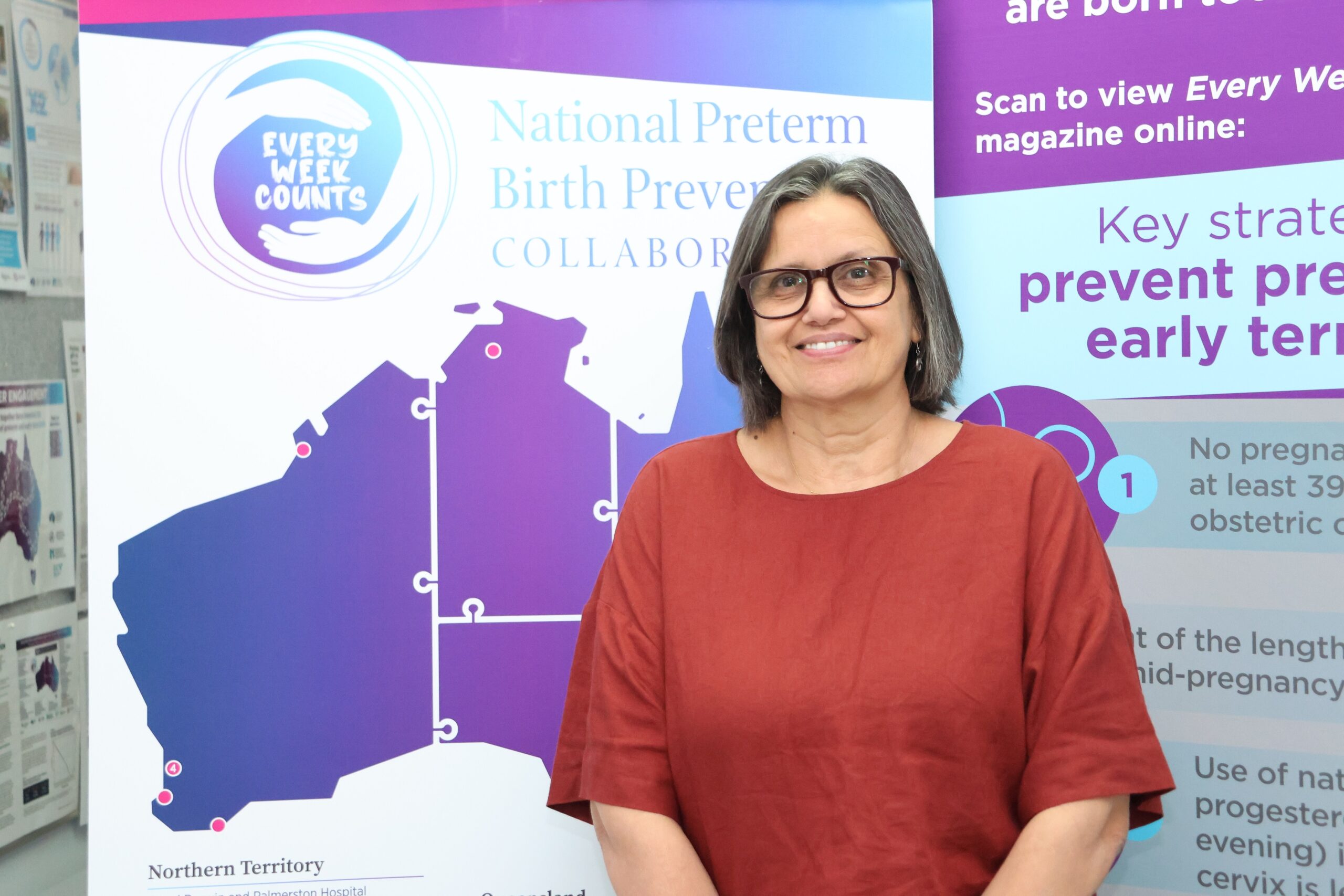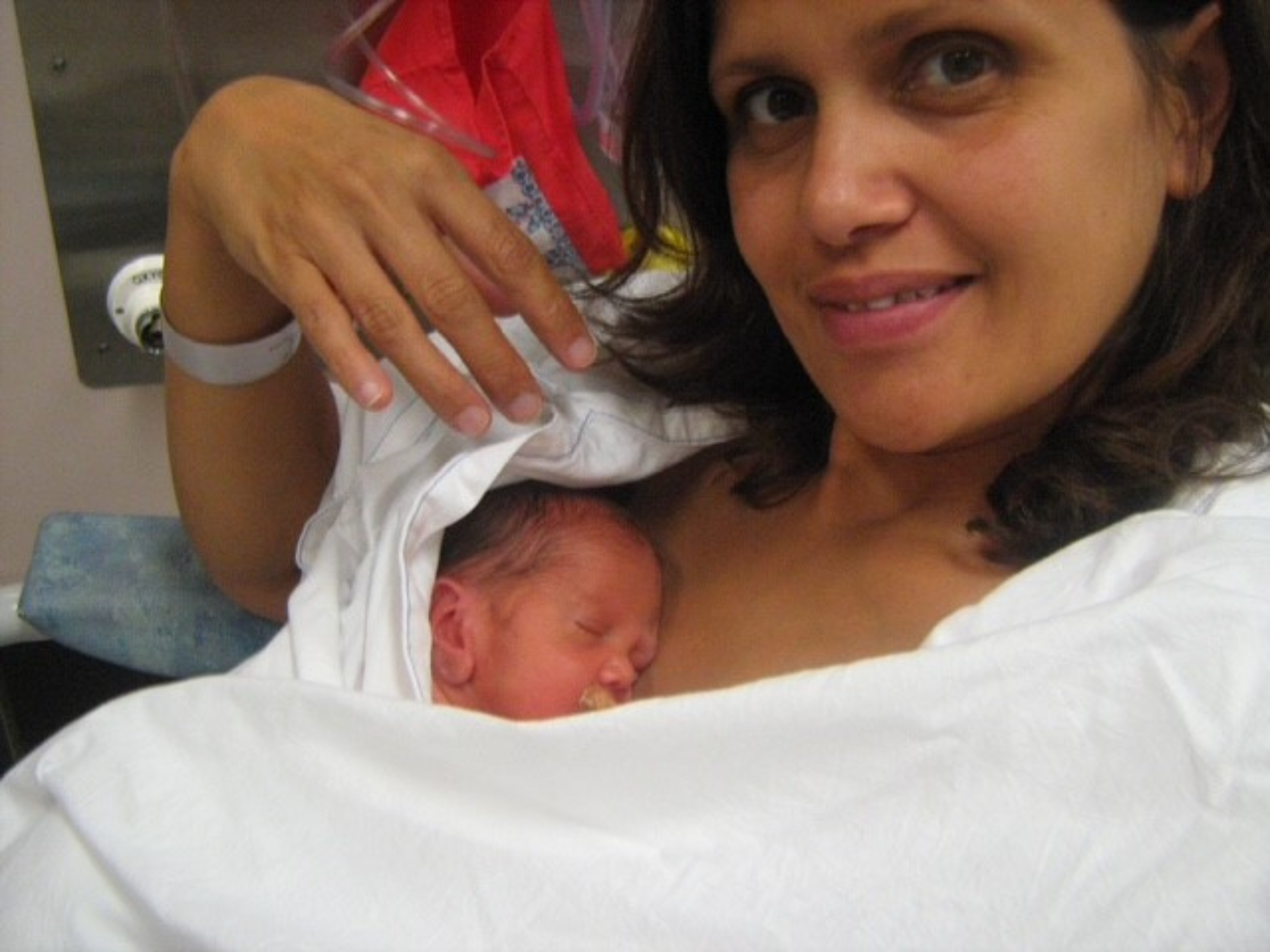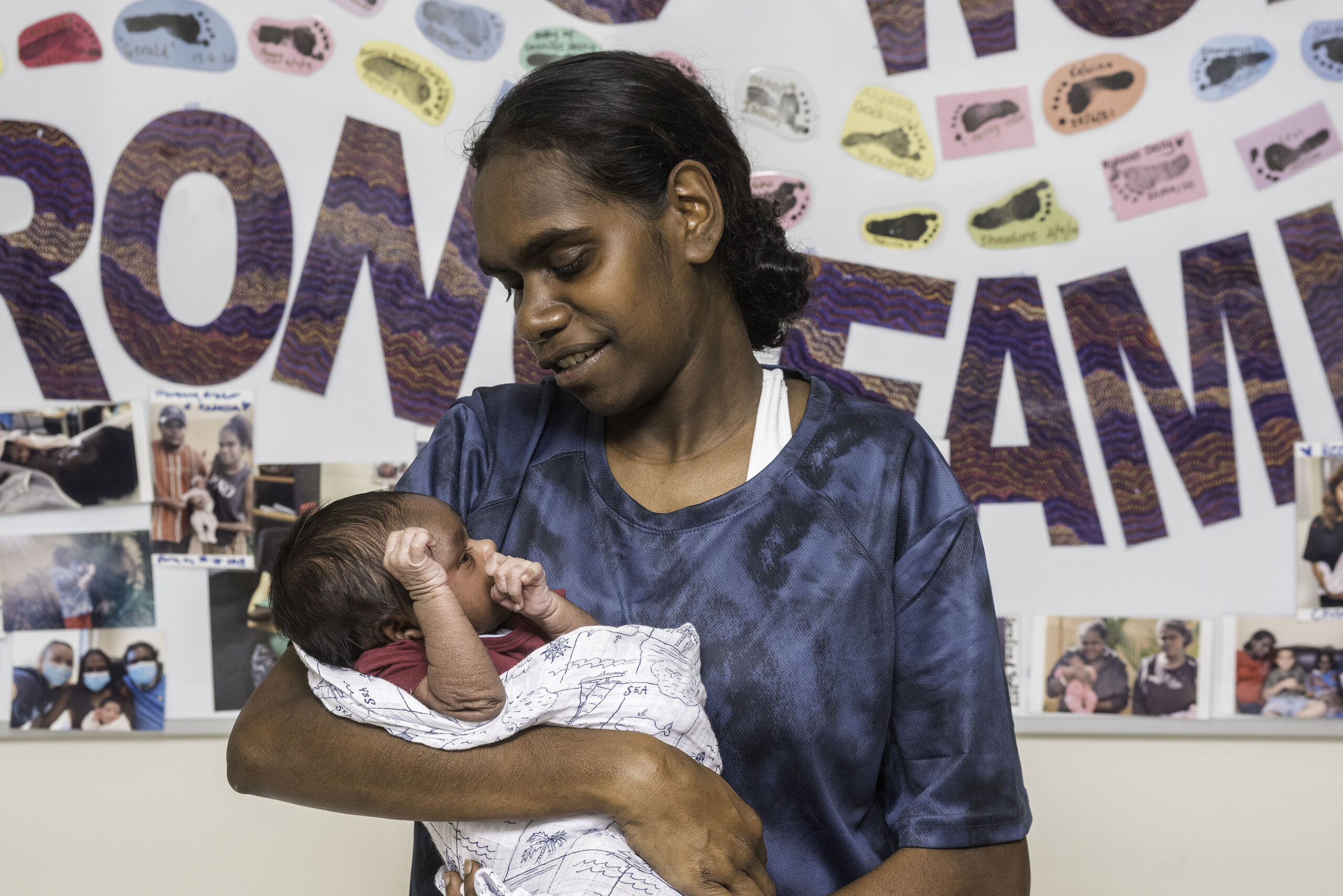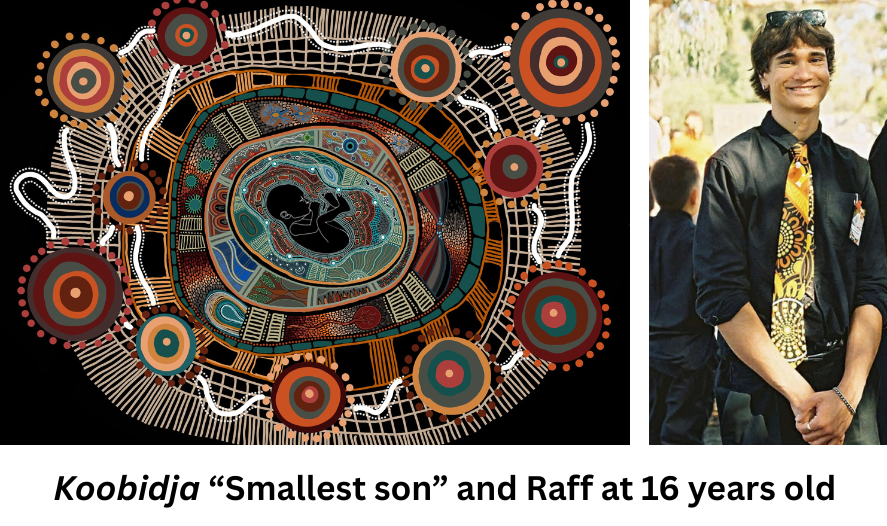Landmark First Nations artwork honours artist’s preterm birth journey

“I’m really pleased to have partnered with the Alliance on this project to develop a beautiful artwork that encapsulates the importance of partnerships when mums, dads and families face preterm birth.”
As part of World Prematurity Day 2025, a major piece of artwork representing the preterm birth and NICU journey of a prominent Western Australian First Nations artist has been unveiled.
The artwork, “Koobidja” (smallest son), has been created by Bindjareb Noongar artist and midwife, Valerie Ah Chee, for the Australian Preterm Birth Prevention Alliance.
Drawing inspiration from her journey through motherhood and her own powerful preterm birth journey with her youngest son, Raffy, Valerie remembers the experience as one that would forever shape her and the family.
“In 2009, my youngest son Raf was born at 29 weeks weighing just 1.65kg. My journey with him opened my eyes to a world I had never really understood before,” Valerie explains.
“He was so tiny. I think I managed a few brief moments of skin-to-skin contact before his was whisked away to the neonatal intensive care unit. Seeing him in his incubator covered with tubes and cords was really confronting but every day he was getting stronger.”
After an 8-week NICU stay, Raffy (now 16) would be able to return home with Valerie and the family.

“I forged some real friendships in the NICU with the other mums and my heart went out to those that didn’t live in Perth and didn’t have the family support we had. I just can’t say enough about the incredible care that is provided to NICU babies at King Edward Memorial Hospital,” Valerie said.
Valerie explains that in addition to drawing inspiration from Raffy’s strength and determination, the artwork honours the support and love from his dad and five brothers, their extensive family support systems, and the amazing staff at KEHM.
Valerie said she hoped this artwork would reinforce the critical need for hospitals and health staff to value cultural safety as much as they do clinical safety.
“At the end of the day, none of us want to have to walk the uncertain and scary path of a preterm birth,” she said.
“First Nations mothers (almost twice as likely to be impacted by preterm birth) are going to spending a lot of time in these hospitals. When we have a preterm baby, we need to feel respected, and we need to feel like we can bring what we need into this space to be able to support our babies as best we can.

“If mum is feeling de-valued and invisible, they might not feel safe coming into a space to spend time with their baby. We need to ensure all First Nations mothers get the wrap around support they need in a culturally safe way so they can be the best mum she can be for her baby.
“I’m really pleased to have partnered with the Alliance on this project to develop a beautiful artwork that encapsulates the importance of partnerships when mums, dads and families face preterm birth,” she said.
You can see Valerie’s explanation of “Koobidja” and the meanings of the various layers and elements below.
……………………………………
At the centre is a baby, small and still needing a lot of growing to do. The layers around the baby represent the weeks of growing they still need to reach full term. But it is not just the growing, it is the development of baby that still needs time to mature, the brain, the lungs to survive and thrive in the outside world.
Culture starts in the womb and the next layer represents the elements of our culture that makes us who we are, that connects us to what makes us strong including: our mother and father, our country, our culture. The sun, moon, earth, water systems and creation spirits are represented here.
The next layer shows elements of ancient knowledge and skills that ensured that mothers were supported throughout their pregnancies from midwives, healers, family and community. We see unbroken connection to Lore, Ancestors, birthing sites, traditional midwives, family and ceremony.
These first layers are what make us who we are, even if some of these connections are not as strong as they should be, they are in our spirit and flow on to our babies.
All of these first layers provide strength when we are faced with challenges such as preterm birth. These elements wrap around us and remind us of who we are and how strong we are.
The next layers represent things that can put us at risk for premature birth. We see the uterus and cervix represented, signifying the risk of shortened cervixes and the need for close monitoring.
Then we see the placenta and the placental issues that also pose a risk to pregnancies and babies. The next one is the risk that blood pressure than pose, we know that preeclampsia can cause preterm birth. Then we see neurons which represent the impact that stress and anxiety can have on pregnancies and lastly, we see elements that represent infection that can also pose a risk for perterm birth.
The last two layers represent hospitals and maternity care health professionals working with families to weave a safety net that acknowledges the importance of cultural safety alongside clinical safety to ensure best practice for families experiencing premature births.
The circles represent the hospitals working together to provide best for families so they can take their babies home as soon as they can to grow and thrive.



